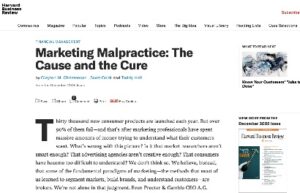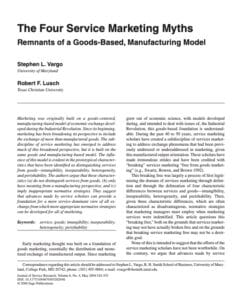Vargo, S. L., Lush, R. (2008)
Abstract: Since the introductory article for what has become known as the “service-dominant (S-D) logic of marketing,” “Evolving to a New Dominant Logic for Marketing,” was published in the Journal of Marketing (Vargo, S. L., & Lusch, R. F. (2004a)), there has been considerable discussion and elaboration of its specifics. This article highlights and clarifies the salient issues associated with S-D logic and updates the original foundational premises (FPs) and adds an FP. Directions for future work are also discussed. KeywordsService-dominant logic-New-dominant logic-Service
Reading time
<1 min









